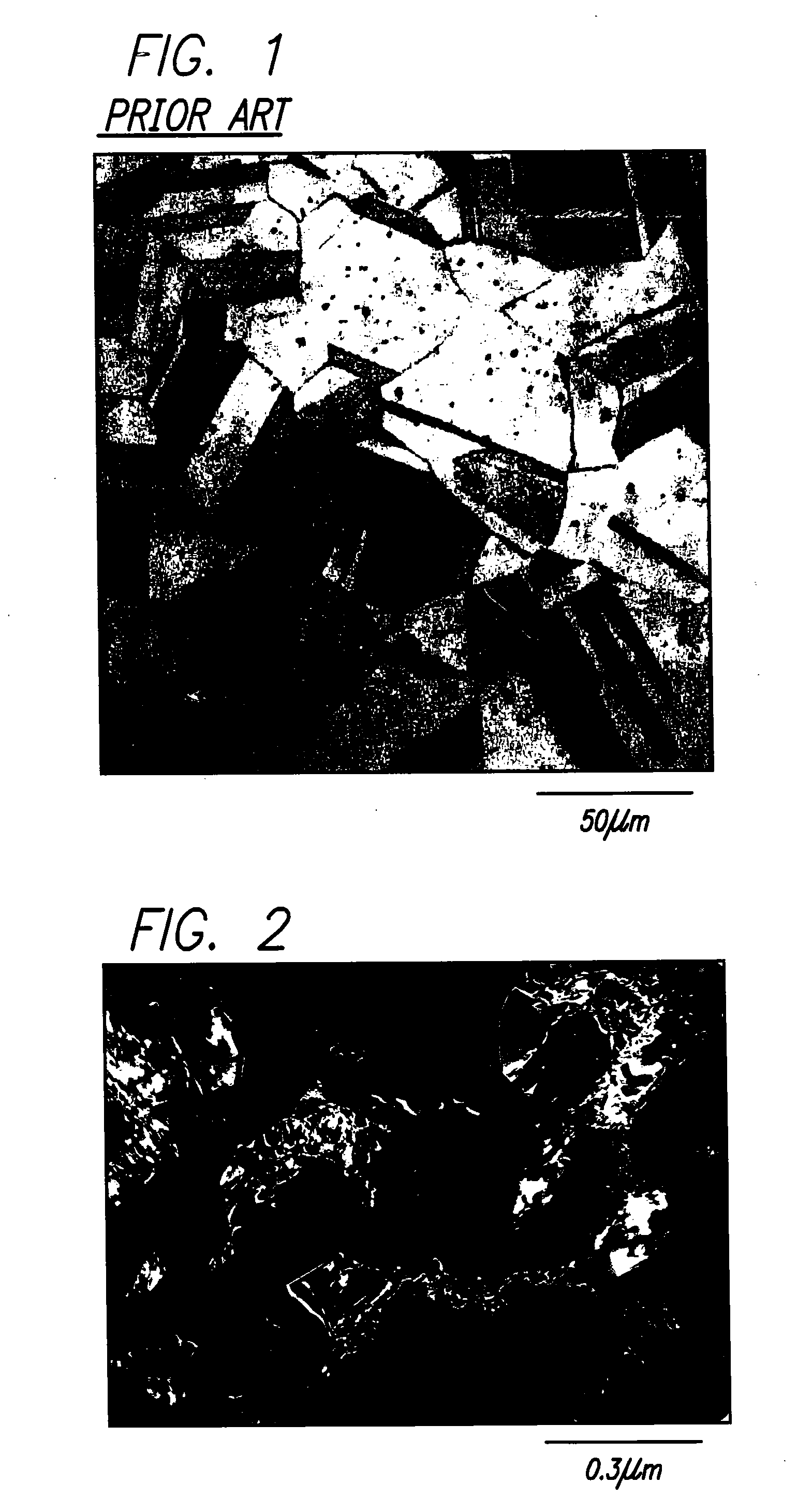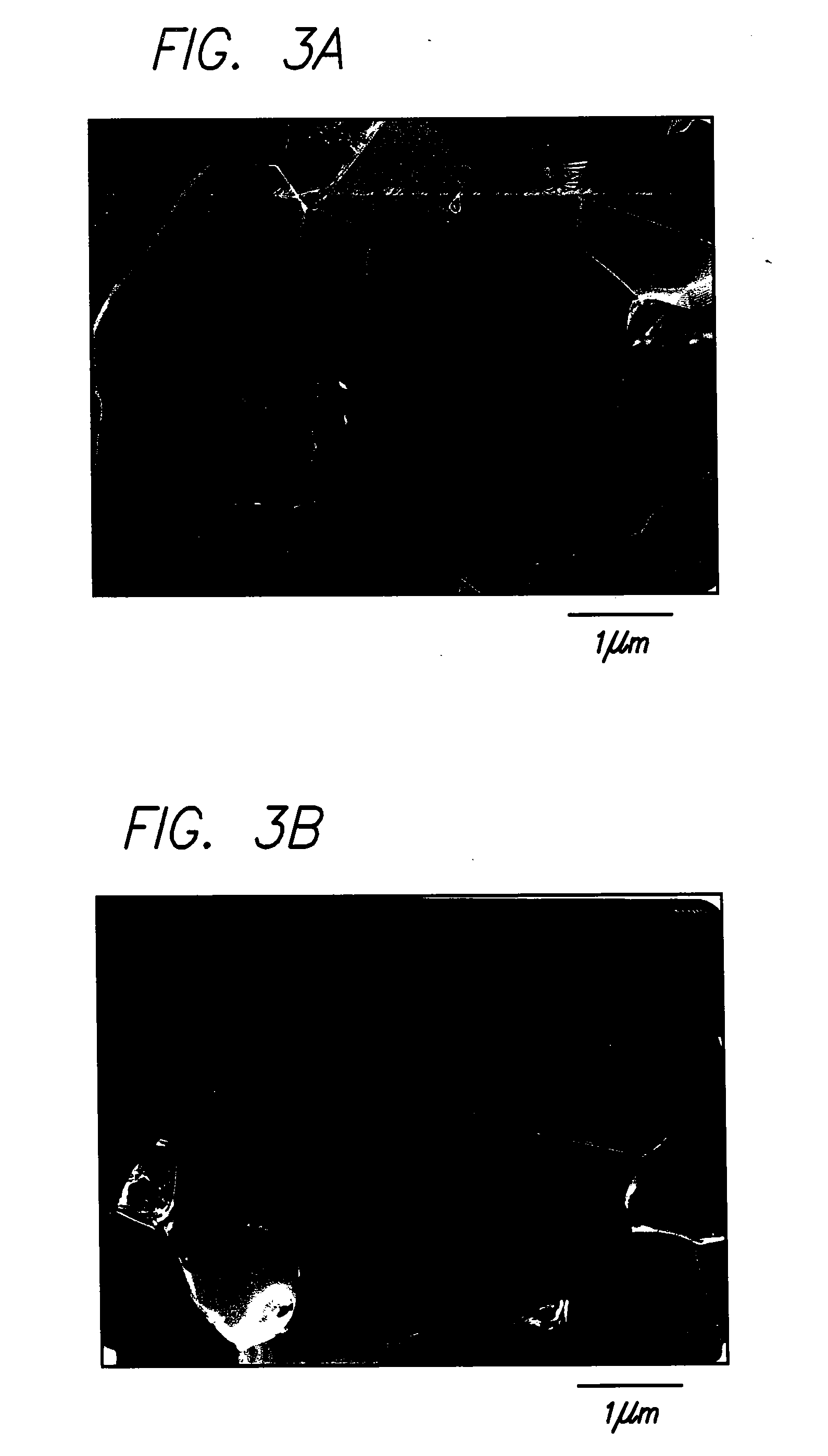Manufacture of fine-grained material for use in medical devices
a technology of fine grain size and medical device, which is applied in the field of manufacturing medical devices using fine grain size metals and alloys, can solve the problems of micro cracks in the high strain region of the stent, and the limitation of achieving fine grain size in this material, so as to increase the strength and ductility of the device, reduce the average grain size of the substrate material, and increase the number of grains
- Summary
- Abstract
- Description
- Claims
- Application Information
AI Technical Summary
Benefits of technology
Problems solved by technology
Method used
Image
Examples
example 1
[0055] A 316L stainless steel specimen in the form of a rectangular bar, 15×15×100 mm in size, is placed into a forging machine, such as the one heretofore described at the Japanese NRIM. Air is then evacuated from the forging machine, and the stainless steel specimen is heated to 800° C. at a rate of about ten ° C. / sec. The specimen is held in the machine at 800° C. for one minute to stabilize the specimen temperature, and then forged immediately. The specimen is subjected cross-forging to a net deformation of eighty percent. The specimen is then held at 800° C. for up to five minutes to control the grain size to the desired level of about five microns. The specimen may then be air cooled or water quenched to room temperature to halt the recrystallization process. FIG. 2 depicts a transmission electron micrograph of a typical section of a 316L stainless steel specimen resulting from this process.
example 2
[0056] A 316L stainless steel specimen in the form of a rectangular bar, 15×15×100 mm in size, is placed in a forging machine, such as the one heretofore described at the Japanese NRIM. Air is then evacuated from the forging machine. The stainless steel specimen is then heated to 800° C. at a rate of about ten ° C. / sec. The specimen is held for in the machine at 800° C. for one minute to stabilize the specimen temperature, and then forged immediately. The specimen is then subjected to cross-forging to a net deformation of eighty percent. The specimen is then cooled to room temperature in water. The specimen is subsequently heated to 900° C. at a rate of about ten ° C. / sec and held at that temperature for two minutes, and then air cooled or water quenched to room temperature to halt recrystallization. FIGS. 3A and 3B depict transmission electron micrographs of typical sections of a 316L stainless steel specimen resulting from this process.
[0057] Stents are well known in the art and ...
PUM
| Property | Measurement | Unit |
|---|---|---|
| temperature | aaaaa | aaaaa |
| temperature | aaaaa | aaaaa |
| grain size | aaaaa | aaaaa |
Abstract
Description
Claims
Application Information
 Login to View More
Login to View More - R&D
- Intellectual Property
- Life Sciences
- Materials
- Tech Scout
- Unparalleled Data Quality
- Higher Quality Content
- 60% Fewer Hallucinations
Browse by: Latest US Patents, China's latest patents, Technical Efficacy Thesaurus, Application Domain, Technology Topic, Popular Technical Reports.
© 2025 PatSnap. All rights reserved.Legal|Privacy policy|Modern Slavery Act Transparency Statement|Sitemap|About US| Contact US: help@patsnap.com



